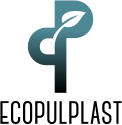Project context
The LIFE ECO-PULPLAST project aims at demonstrating the possibility to recycle pulper waste – the industrial waste of paper mills that use recovered paper. Thanks to the prototype line that will be implemented and tested during the project, LIFE ECO-PULPLAST will prove the environmental and economic sustainability of an innovative technology to recover pulper waste and reuse it in the manufacturing of new plastic compounds and products.
Europe is among the world’s largest producing and consuming regions for pulp, paper and board. Boasting some 941 paper mills and 636 enterprises, the European paper and board production totalled 91.1 million tons in 2013, according to CEPI figures.
In particular, in Tuscany region is present the Lucca Paper District (the largest European paper industrial cluster), with 120 production plants, more than 6,000 employees, an annual turnover of 3.85 billion euros and satellite activities in the mechanics, plant designing, transport, ICT, etc. The overall production of the paper district of Lucca amounts to 1.2 million tons of tissue paper and 950,000 tons of paper for industrial use, equal to respectively 75% and 40% of the total Italian production.
Paper is the most recycled product in Europe, and Europe is the global champion in paper recycling with a rate of 72%. The paper industry has been a driving force in achieving that rate: today 54% of the paper industry’s raw material comes from recovered paper and board, mostly for the production of paper for industrial use.
Though the transformation chain of the recovered paper is highly optimised, recovered paper contains a share of materials that cannot be reused and are discarded. This scrap amounts to some 7% in weight of the recovered paper and constitute the pulper waste, which is mostly composed of mixed plastics. The Lucca paper district alone produces 100.000 ton/year of pulper waste. Since a long time the paper mills have sent their pulper waste to landifill and to incinerators, with significant and no more sustainable environmental and economic impacts.
In the latest years, new technologies have arisen to recycle mixed plastics with increasingly better physical/mechanical properties. In particular, one promising and innovative technology for the treatment and recycling of pulper waste has been identified and preliminarily tested. Such technology does not require a selection nor a washing phase and can create new plastic compounds and marketable products from mixed plastic waste.


